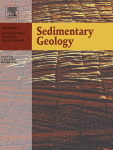Sequence stratigraphic evolution of the Kumano forearc basin during the last deglaciation: Influence of eustasy and tectonically-controlled shelf morphology on deep-marine sediment dynamics
Abstract
We focus here on the different forcings that controlled the deep-marine sediment dynamics and associated stratigraphic pattern in the Nankai subduction zone, especially in the Kumano forearc basin. In this study, based on high-resolution subbottom profiler data, we investigate the Upper Pleistocene–Holocene deposits of the tectonically active Kumano forearc basin to better understand the role of glacio-eustatic forcing and tectonic-morphological controls on the sedimentation patterns in the basin. We recognize three distinct seismic units that characterize the different stages of the last to current interglaciation cycle. Chaotic debris- and mud-flow deposits, intercalated with turbidites accumulating mainly in the deep basin, are related to a lowstand stage when rivers were directly connected to canyon heads. The transgressive stage, covering the deglaciation period, is characterized by a high proportion of turbidites and a decrease in chaotic deposits. The flooding and development of the Ise Bay at ~10 ka, resulted in starvation of the deep basin where mostly hemipelagic deposits occur. However, some dilute flows still reached the proximal area of the basin depositing some turbidites. We identify an interplay between the global sea-level rise and the shelf morphology, both having a strong control on the deep-marine stratigraphic pattern of the Kumano Basin. The rise of sea level triggered a disconnection between the river mouth and canyon head, thus inducing a general retrogradation of sediment-gravity flow deposits throughout the deglaciation. The shelf morphology, which is mainly driven by tectonic uplift (narrow shelf) or subsidence (wide shelf), directly played on the connection between the river and deep-marine system and on the accommodation space in the shallow-marine environment. Although it does not appear as a dominant control, climatic control, especially the influence of the East Asian summer monsoon during deglaciation cannot be neglected. It most likely contributed to an increase in sandy sediment supply occurring at the beginning of the transgressive stage.
The highlight of our study is related to the tectonically-controlled shelf morphology and its role on the deep-marine stratigraphic pattern. The northwestern area of the Kumano Basin, undergoing significant tectonic-related uplift, is defined by a narrow shelf (<10 km) and sustained sediment supply to the basin throughout the deglaciation and highstand period. However, under similar eustatic and climatic conditions, the eastern area characterized by the development of the subsiding Ise bay (wide shelf > 90 km), shows a decrease in sand supply to the basin toward the end of the deglaciation. A strong control of the shelf morphology on the deep-marine stratigraphic pattern is also observed in other forearc basins along the Nankai subduction zone undergoing similar eustatic and climatic conditions.

